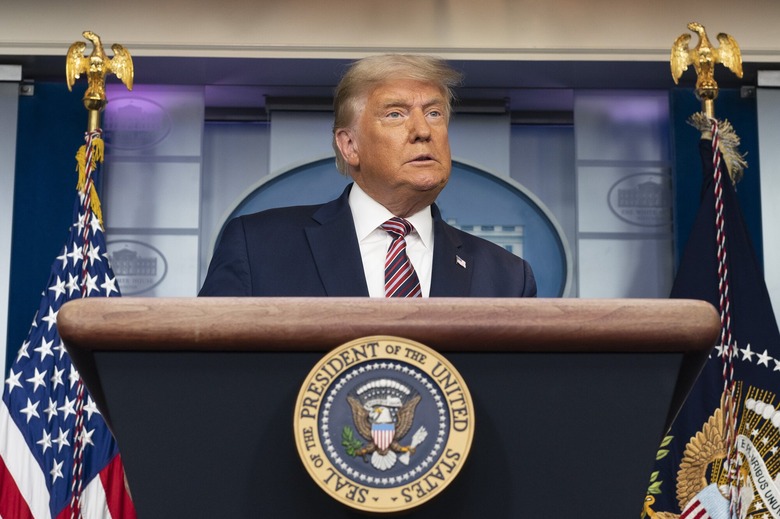According To TikTok Insiders, Trump Might Have Been Right About The Chinese Company
Less than a month after we learned about a creepy privacy change that the parent company of the TikTok app implemented for the popular service — raising concerns immediately among people who've long suspected the app of having a too-close relationship with its Chinese parent company, ByteDance — some TikTok insiders have now stepped forward to share more ominous concerns. Of the sort, mind you, that were also at the core of the pressure campaign which President Trump and officials in his administration mounted against the service, in an attempt to either cleave off TikTok's US presence and put it under the control of an American company, or to boot it out of the US entirely.
The insiders include a former TikTok recruiter as well as four former employees, all of whom seem to have told CNBC that what the Trump administration was alarmed about — well, that the previous administration's concerns don't seem to be too far from the truth. To wit, these insiders told CNBC that the company "has access to American user data and is actively involved in the Los Angeles company's decision-making and product development." And here's the even more interesting part: The Biden administration appears to be picking right up where Trump officials left off, even if they're not going so far as to wage a scorched-earth campaign against TikTok. Yet.
Importantly, the ex-TikTok employees who spoke with the business news network stressed that any boundary between TikTok and its China-based parent company are so small and blurry that the boundary is essentially nonexistent. For example, one TikTok employee said that ByteDance employees can access data on US users — that this, in fact, was reportedly done when an American TikTok employee needed to perform a search on TikTok users who accessed something specific, such as a hashtag or the user perhaps "liked" certain kinds of videos.
The American TikTok employee had to reach out to the mothership, at ByteDance in China. And the parent company, in time, sent back the relevant information which came from a global analysis of users that was, again, performed from China.
"We employ rigorous access controls and a strict approval process overseen by our US-based leadership team, including technologies like encryption and security monitoring to safeguard sensitive user data," a TikTok spokeswoman shared in a statement to CNBC. Don't forget, though: China's National Intelligence Law makes it compulsory for organizations as well as Chinese citizens to "support, assist and cooperate with the state intelligence work."
Meanwhile, one can't help but suspect that the Trump administration would have ramped up its fight against TikTok even more, had the service did then what it recently accomplished, as far as the privacy policy change — that change allows TikTok to "collect biometric identifiers and biometric identification" from user content, which includes "faceprints and voiceprints." The company's privacy policy now reads: "We may collect biometric identifiers and biometric information as defined under US laws, such as faceprints and voiceprints, from your User Content. Where required by law, we will seek any required permissions from you prior to any such collection."
That last sentence is very carefully worded, because as things stand now, TikTok could actually collect biometric data from most users in the US and still be within the bounds of the framing above. That's because most states don't have laws on the books forbidding companies from collecting this data.
As noted above, the Biden administration still very obviously has concerns about the TikTok app. An executive order Biden recently signed directs, among other things, Commerce Secretary Gina Raimondo to report back in the coming months about how American user data is handled by TikTok.
Ambuj Kumar, CEO of the cybersecurity company Fortanix, summed up one potential concern among security professionals thus to CNBC:
"I'd be shocked if they are not storing all the videos being posted by teenagers. Twenty years from now, 30 years from now, 50 years from now when we want to nominate our next justice to the US Supreme Court, at that time they will go back and find everything they can, and then they'll decide what to do with it."
